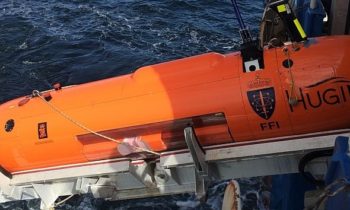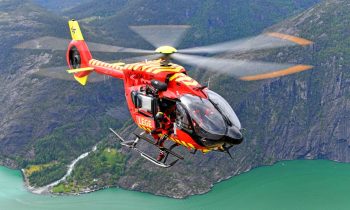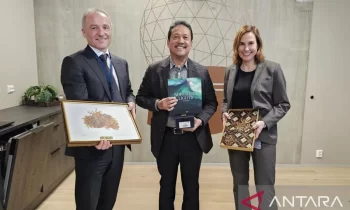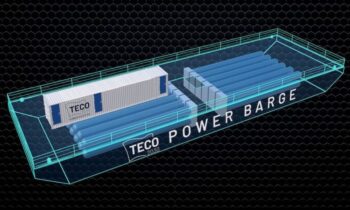 Kongsberg Maritime recently participated, using its Maritime Broadband Radio (MBR) technology, in a highly unusual and intriguing exercise in the fjord just outside Trondheim, Norway.
Kongsberg Maritime recently participated, using its Maritime Broadband Radio (MBR) technology, in a highly unusual and intriguing exercise in the fjord just outside Trondheim, Norway.
Four autonomous units – an unmanned aerial vehicle (UAV), an unmanned surface vessel (USV), an autonomous underwater vehicle (AUV), and a tethered relay balloon – were guided from a mother ship in various tasks. These required precise co-ordination from the command centre, and with each other. Kongsberg provided the one central element without which the operation would not have been possible – the communications system.
The Autonomous Network of Heterogeneous Vehicles (ANOHV) exercise had multiple goals, including demonstrating AUV operations using a multi-vehicle, multi-platform network. It also demonstrated integrated operations using high bandwidth communication between all nodes in the network.
The bandwidth was provided by MBR, which is an easy-to-use, flexible and robust means of transferring large amounts of data over long distances, even in the most challenging of conditions. Various MBR units were installed on all participating vehicles, and at the central station for the exercise located at the Norwegian University of Science and Technology (NTNU) in Trondheim.
The MBR is a new take on inter-vessel communication. By installing MBR communication units on every vessel involved in an operation, a broadband link is established and a maritime information highway is created. This enables high-speed, high capacity, and low latency transfer of data, without the need for additional infrastructure and no prospect of data disappearing on route.
The MBR system is a maritime radio network distribution system operating in the 5GHz band. It has been demonstrated as a stable, high capacity communication in a maritime environment. It can handle close-by vessel operations, platform obstructions and distances in excess of 50km. With MBR, there are no airtime charges as data transfers between vessels and assets is free once an MBR network has been established.
“MBR has remarkable capabilities for transferring data beyond line-of-sight, even with obstructions and low antenna positions. Our performance in the exercise proved that,” said Kongsberg product manager Erlend Vågsholm. “In large, complex operations at sea, for example in search and rescue operations and oil spill recovery, there are multiple vessels and aircraft at work simultaneously, and they all need to communicate and exchange data between each other. MBR enables the exchange of high resolution images and video, and keeps all participants connected at high bandwidth of consistently good quality.”
For the ANOHV operation, an aerial drone supplied streaming images, the OceanEye tethered relay balloon was elevated from the Telematron autonomous surface vehicle, which also shadowed a Hugin AUV. The command centre for the exercise was located on board Gunnerus, the research vessel of the Norwegian University of Science and Technology.
Hugin collected bathymetric data and identified pre-set targets, even performing a mid-dive redirection on command from Gunnerus via a relay station, using MBR and an acoustic communication link, demonstrating flexibility that opens new opportunities for use of AUVs.
The ultimate goal of the team on Gunnerus was to make themselves redundant, at least on board. Operating a manned command ship is one of the larger cost drivers in complex operations at sea, and using an autonomous vessel commanded from shore would shrink costs, eliminate risk to crew, and improve performance, as access to resources on land could give the team an even broader knowledge and experience base.
Overall conclusions from the operation were largely positive, with MBR consistently performing according to expectations, and in many cases beyond these, said Kongsberg.
With the ANOHV manoeuvres in the Trondheim fjord, fully autonomous, integrated remote operations came one step closer to becoming reality. The MBR solution proved to be the glue bonding all the pieces together. NTNU and Kongsberg were partnered by Maritime Robotics and the Norwegian Defence Research Establishment in this project.



